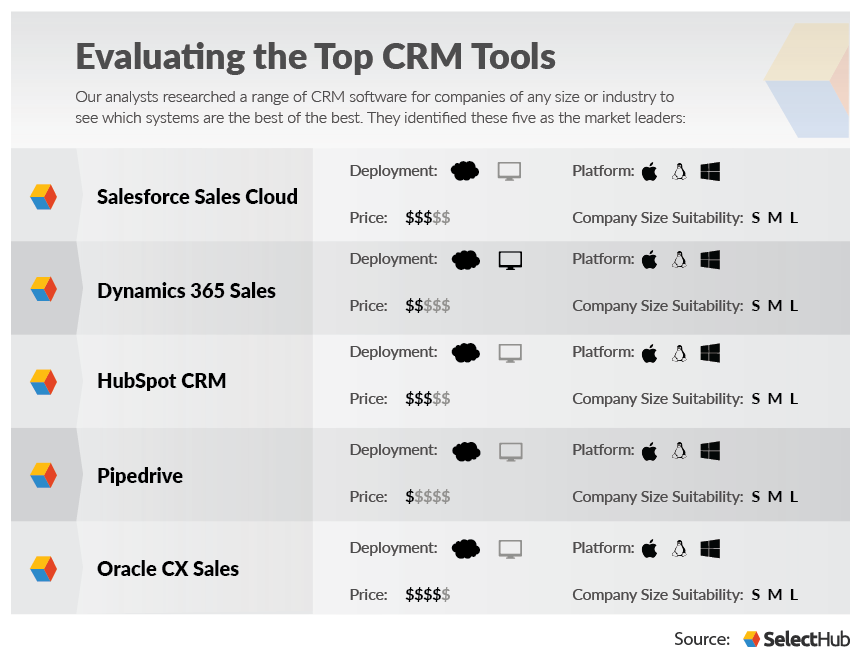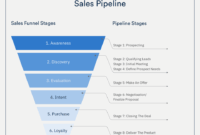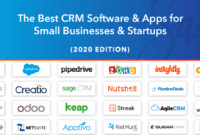Customer relationship management tools are revolutionizing how businesses interact with their clients. These systems offer a comprehensive suite of features designed to streamline communication, track interactions, and ultimately boost customer loyalty and sales. From simple contact management to sophisticated analytics dashboards, CRM tools provide businesses of all sizes with the capabilities to manage their customer relationships effectively and efficiently. Understanding the nuances of different CRM platforms and their implementation is crucial for maximizing their potential.
This exploration delves into the core functionalities of leading CRM systems like Salesforce, HubSpot, and Zoho, comparing their strengths and weaknesses. We will also cover crucial aspects such as data integration, security, implementation strategies, ROI measurement, and emerging trends in the field, providing a holistic overview of the world of customer relationship management tools.
Top CRM Tool Features & Functionality
Choosing the right Customer Relationship Management (CRM) system is crucial for business success. A well-implemented CRM streamlines operations, improves customer engagement, and ultimately boosts profitability. Understanding the core features and functionalities of leading CRM platforms is essential for making an informed decision.
Comparison of Core CRM Features
The following table compares and contrasts the core features of three leading CRM systems: Salesforce, HubSpot, and Zoho. Each platform offers a robust suite of tools, but their strengths vary depending on specific business needs and size.
| Feature | Salesforce | HubSpot | Zoho |
|---|---|---|---|
| Contact Management | Comprehensive contact management with detailed profiles, segmentation, and custom fields. | Robust contact management with similar capabilities to Salesforce, strong integration with marketing tools. | Strong contact management with customizable fields and integrations, generally more affordable than Salesforce and HubSpot. |
| Sales Automation | Advanced sales automation features including opportunity management, pipeline tracking, and forecasting. | Sales automation tools focused on lead nurturing and sales pipeline management, strong integration with marketing automation. | Good sales automation capabilities, including lead scoring and pipeline management, at a more competitive price point. |
| Marketing Automation | Marketing Cloud offers robust email marketing, campaign management, and analytics; often requires separate purchase. | Marketing Hub tightly integrated with sales features, offering comprehensive marketing automation capabilities. | Marketing automation tools are available, integrated with other Zoho applications, providing a comprehensive suite at a lower cost. |
| Customer Service | Service Cloud provides case management, knowledge base, and community features; often requires separate purchase. | Service Hub provides ticketing, knowledge base, and live chat features; tightly integrated with other HubSpot tools. | Zoho Desk provides similar functionality to HubSpot Service Hub, offering a comprehensive solution at a lower price point. |
| Reporting and Analytics | Extensive reporting and analytics dashboards providing detailed insights into sales, marketing, and customer service performance. | Provides robust reporting and analytics dashboards integrated with sales and marketing data. | Offers comprehensive reporting and analytics, allowing for customizable dashboards and insightful data visualizations. |
Importance of CRM Integration Capabilities
Integration capabilities are paramount for maximizing the effectiveness of a CRM system. A siloed CRM fails to provide a holistic view of the customer journey. Seamless integration with other business applications, such as marketing automation platforms, e-commerce systems, and accounting software, allows for data synchronization and automation of various business processes. For example, integrating a CRM with an e-commerce platform allows for automatic updates of customer purchase history within the CRM, providing sales teams with valuable insights into customer behavior. Integrating with marketing automation tools enables targeted campaigns based on customer segmentation and behavior, improving lead nurturing and conversion rates. Integrating with accounting software streamlines invoicing and payment processes, improving financial management.
Typical Customer Journey within a CRM System
The following user flow diagram illustrates a typical customer journey within a CRM system:
Customer Inquiry → Lead Capture (Website form, phone call, email) → Lead Qualification (Scoring, segmentation) → Sales Engagement (Email, phone, meeting) → Opportunity Creation → Deal Closing → Customer Onboarding → Customer Support (Ticketing, knowledge base) → Customer Relationship Management (Loyalty programs, feedback collection). Each stage involves data updates and interaction within the CRM, providing a complete record of the customer interaction.
CRM Security Features and Data Protection Protocols
Robust security measures are essential for protecting sensitive customer data within a CRM system. Leading CRM providers offer various security features and data protection protocols, including:
- Data encryption: Both data in transit and at rest are encrypted to prevent unauthorized access.
- Access controls: Role-based access control limits access to sensitive data based on user roles and responsibilities.
- Regular security audits: Regular security audits identify and address potential vulnerabilities.
- Compliance certifications: Many CRM providers hold certifications such as ISO 27001 and SOC 2, demonstrating adherence to industry security standards.
- Data backup and recovery: Robust data backup and recovery mechanisms ensure business continuity in case of data loss or system failure.
- Multi-factor authentication: This adds an extra layer of security, requiring users to provide multiple forms of authentication to access the system.
CRM Implementation & Customization Strategies
Successfully implementing a CRM system is crucial for small businesses seeking to streamline operations and enhance customer relationships. A well-planned implementation minimizes disruption and maximizes the return on investment. This section details best practices for a smooth transition and effective system utilization.
Best Practices for CRM Implementation in Small Businesses
Implementing a CRM in a small business requires a phased approach focusing on user adoption and data accuracy. Begin with thorough planning, including identifying key stakeholders, defining clear objectives, and selecting the right CRM solution tailored to specific needs and budget. Prioritize user training to ensure proficiency and maximize system usage. Start with a pilot program involving a small group of users to identify and resolve any initial issues before a full rollout. Regular monitoring and performance analysis are essential for ongoing optimization. Finally, remember that CRM implementation is an iterative process; continuous improvement is key.
Step-by-Step Guide for CRM Data Migration
Migrating data from an existing system to a new CRM platform is a critical step requiring careful planning and execution. First, thoroughly assess the existing data, identifying inconsistencies and redundancies. Clean and standardize the data to ensure accuracy and consistency within the new system. Develop a comprehensive data migration plan, outlining the process, timeline, and resources required. Utilize data migration tools to automate the process, minimizing manual intervention and errors. Implement rigorous data validation checks to confirm data integrity after the migration. Finally, thoroughly test the new system to ensure all data is accurate and accessible.
Challenges of CRM Customization and Their Solutions
Customizing a CRM to meet specific business needs often presents challenges. One common issue is the complexity of the customization process, requiring technical expertise and potentially increasing implementation costs. Another challenge is maintaining customizations as the CRM software updates. Outdated customizations can lead to system instability and incompatibility. To address these, businesses should carefully evaluate the extent of customization required, prioritizing features that directly impact core business processes. Engage experienced CRM consultants or developers to ensure seamless integration and maintainability. Regularly review and update customizations to align with software updates and evolving business needs. Consider using pre-built integrations and apps where possible to minimize custom development.
CRM Vendor Selection Checklist
Choosing the right CRM vendor is a crucial decision impacting long-term success. The following checklist provides key factors to consider:
| Factor | Importance | Considerations | Decision Criteria |
|---|---|---|---|
| Cost | High | Licensing fees, implementation costs, ongoing maintenance, training expenses | Cost-benefit analysis, ROI projections |
| Features & Functionality | High | Required features (sales, marketing, customer service), scalability, integrations | Alignment with business needs, future scalability |
| Vendor Reputation & Support | High | Customer reviews, vendor experience, support options (phone, email, online resources) | Positive customer feedback, responsive and reliable support |
| Integration Capabilities | Medium | Integration with existing systems (ERP, marketing automation), API availability | Seamless data flow between systems, ease of integration |
| Scalability & Flexibility | Medium | Ability to handle increasing data volume and user base, adaptability to changing business needs | Future growth potential, adaptability to future requirements |
| Security & Data Privacy | High | Data encryption, access controls, compliance with relevant regulations (GDPR, CCPA) | Robust security measures, compliance with data privacy regulations |
CRM ROI & Future Trends
Implementing a CRM system represents a significant investment for any business. Understanding its return on investment (ROI) and anticipating future trends is crucial for maximizing its value and ensuring long-term success. This section details methods for measuring CRM ROI, explores emerging technological advancements, and examines the impact of different deployment models.
Measuring CRM ROI
Calculating the return on investment for a CRM system requires a multifaceted approach, focusing on both tangible and intangible benefits. While direct cost savings are easily quantifiable, indirect improvements in efficiency and customer satisfaction require careful measurement.
A common approach involves comparing the costs of implementing and maintaining the CRM system against the increased revenue generated or cost savings realized. This can be expressed as a simple ROI calculation:
ROI = (Net Profit from CRM – Cost of CRM) / Cost of CRM * 100%
For example, if a company invests $10,000 in a CRM system and experiences a $20,000 increase in revenue due to improved sales efficiency and customer retention, the ROI would be 100%. However, this calculation needs to consider ongoing maintenance costs, training expenses, and potential integration costs with existing systems.
Key metrics to track include:
- Increased sales revenue: Monitor sales figures before and after CRM implementation to quantify the impact on sales performance.
- Improved customer retention rates: Track customer churn and calculate the cost savings associated with retaining existing customers.
- Reduced customer acquisition costs: Measure the cost per lead and cost per acquisition before and after CRM implementation.
- Enhanced sales cycle efficiency: Analyze the time it takes to close deals and identify improvements resulting from better lead management and sales process automation.
- Increased customer satisfaction scores: Conduct customer surveys to measure changes in satisfaction levels.
Emerging Trends in CRM Technology
The CRM landscape is constantly evolving, driven by advancements in artificial intelligence (AI) and automation. AI-powered CRM systems are capable of predictive analytics, personalized customer experiences, and automated workflows. This translates to improved lead scoring, targeted marketing campaigns, and proactive customer service. For instance, AI can analyze customer data to identify high-value prospects, predict churn, and personalize marketing messages. Automation streamlines repetitive tasks, freeing up sales and marketing teams to focus on strategic initiatives.
Impact of Mobile CRM Solutions
Mobile CRM solutions have revolutionized customer engagement and accessibility. Sales representatives, customer service agents, and marketing professionals can access crucial customer data and interact with customers from anywhere, anytime. This enhanced accessibility improves response times, boosts customer satisfaction, and enables more efficient field operations. A field sales team, for example, can update customer information and access relevant documents immediately after a client meeting, ensuring timely follow-up and improved lead conversion rates.
Cloud-Based vs. On-Premise CRM Deployments
The choice between cloud-based and on-premise CRM deployments presents a significant decision with far-reaching implications.
Cloud-Based CRM: Offers scalability, accessibility, reduced upfront costs, and automatic updates. However, reliance on internet connectivity and potential data security concerns are drawbacks. Companies like Salesforce have popularized this model, demonstrating its scalability and ease of implementation.
On-Premise CRM: Provides greater control over data security and customization options, but involves higher upfront investment, ongoing maintenance costs, and limited accessibility. This model is more suitable for organizations with stringent data security requirements and a strong IT infrastructure.
Last Point
In conclusion, mastering customer relationship management tools is no longer a luxury but a necessity for businesses aiming to thrive in today’s competitive landscape. By carefully selecting the right CRM system, implementing it effectively, and continuously monitoring its ROI, companies can significantly improve customer engagement, streamline operations, and ultimately drive sustainable growth. The future of CRM lies in leveraging emerging technologies like AI and automation to further personalize customer interactions and unlock even greater potential.



